Abstract
OBJECTIVE--To assess the association between occupational exposure to toluene diisocyanate or methylene diphenyldiisocyanate and risk of cancer. DESIGN--A cohort based case-referent study. STUDY BASE--7023 subjects employed during the period 1958 to 1987 in nine Swedish polyurethane foam manufacturing plants. MAIN OUTCOME MEASURES--Odds ratios adjusted with respect to the matching factors (age at risk, calendar year at risk, sex, and plant), calculated from the conditional logistic regression model. RESULTS--A non-significant association was found between high exposure to isocyanates and prostate cancer (OR 2.66, 90% confidence interval (90% CI) 0.39-18.1), which was not enhanced when an induction latency period of 10 years was applied. An association between isocyanate exposure and colon cancer was even weaker. No associations were seen for non-Hodgkin's lymphoma and rectal cancer. CONCLUSIONS--The tentative associations, derived from a previous cohort study, between isocyanate exposure and excess risk for non-Hodgkin's lymphoma and rectal cancer were not supported. Instead, non-significant associations with prostate cancer, and possibly colon cancer, were seen.
Full text
PDF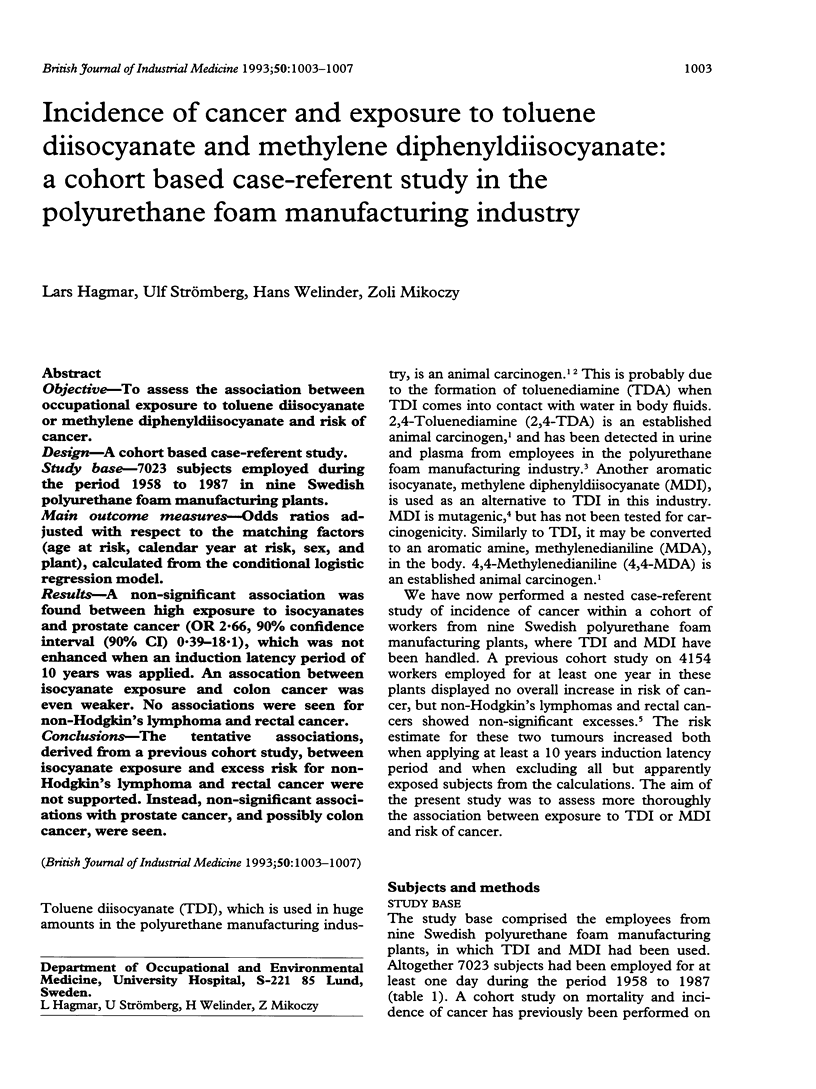
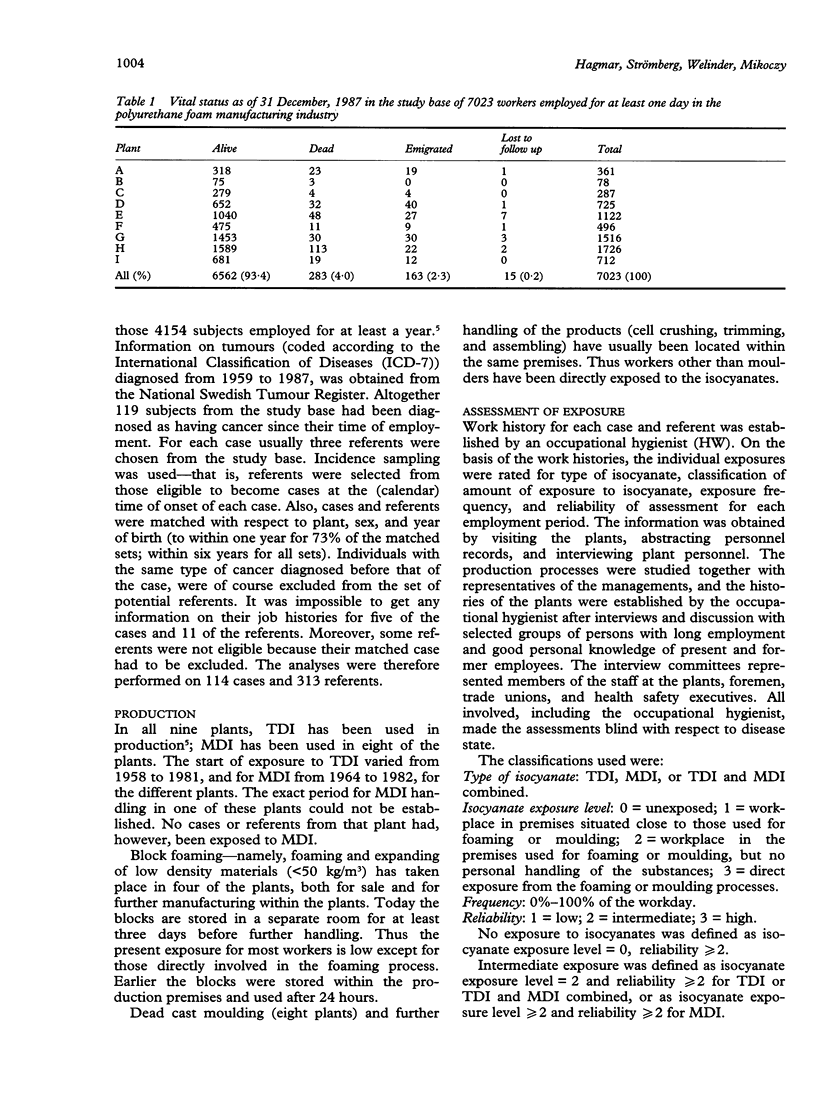
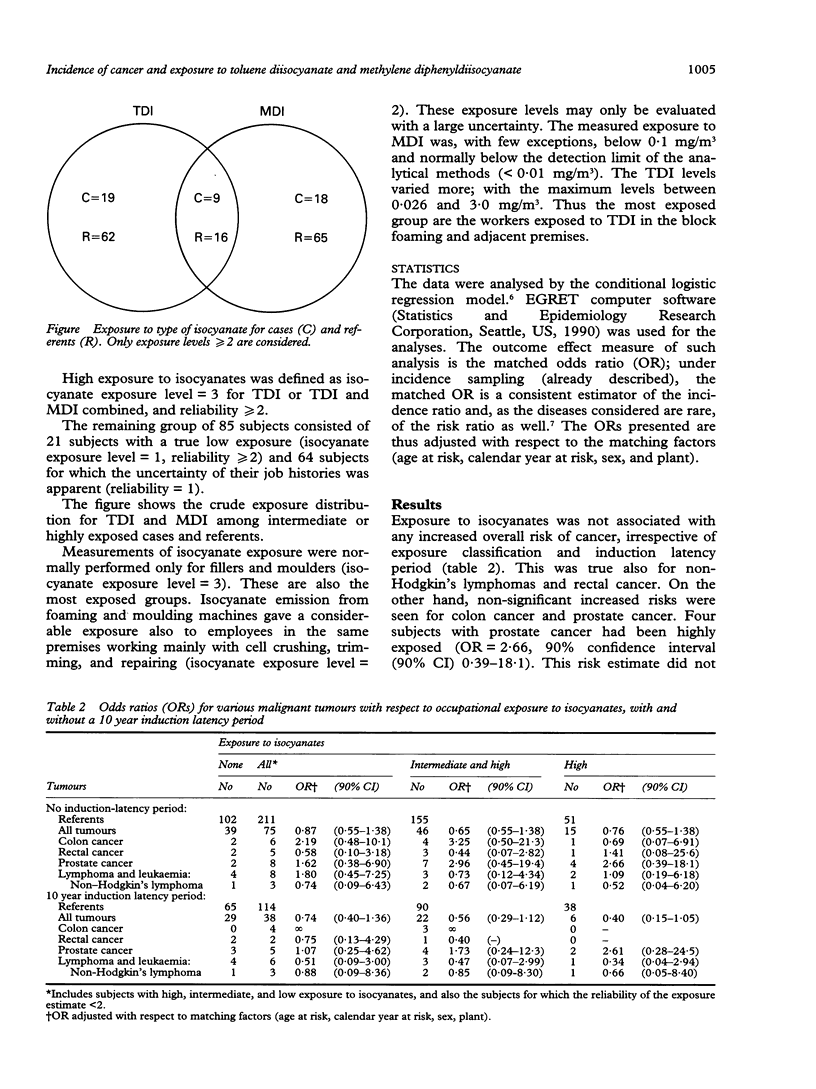
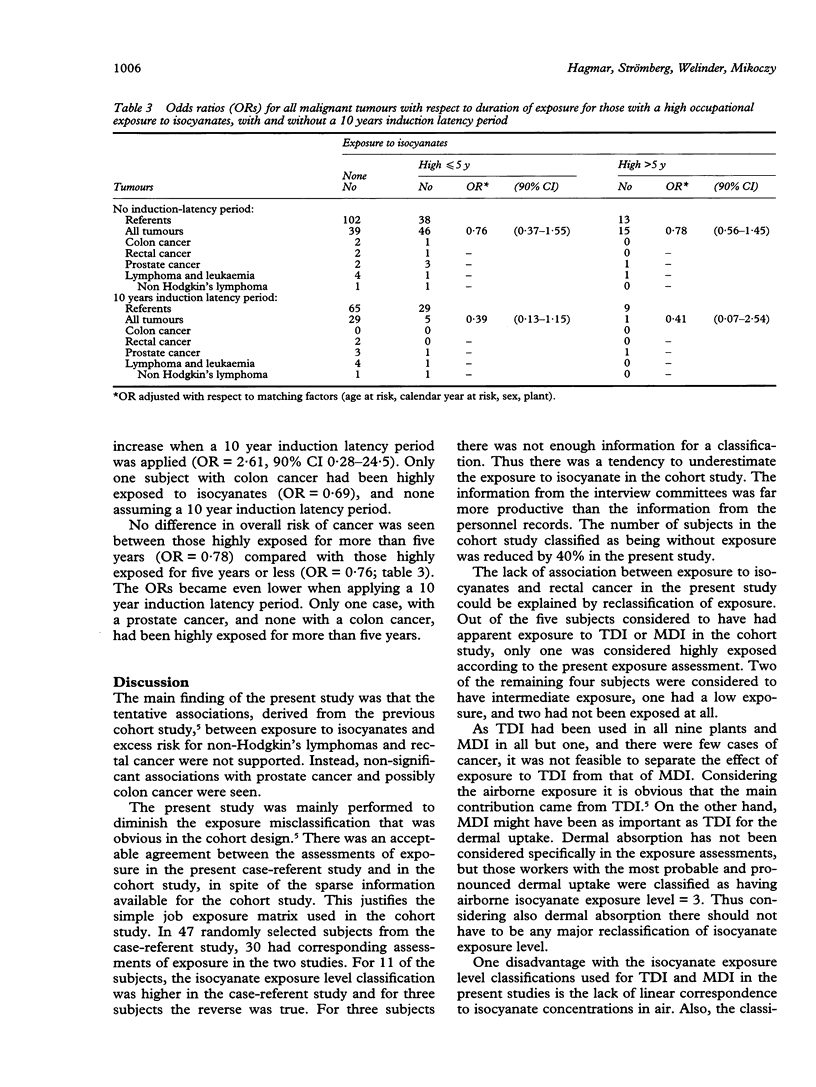
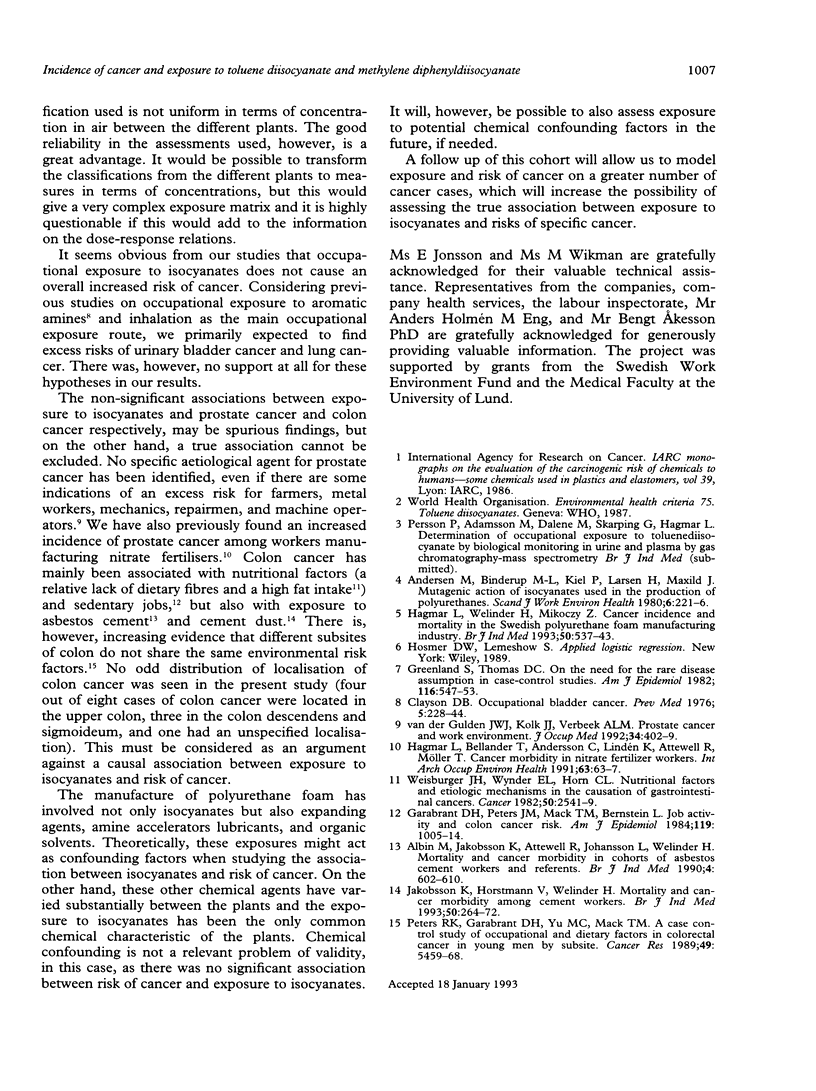
Selected References
These references are in PubMed. This may not be the complete list of references from this article.
- Albin M., Jakobsson K., Attewell R., Johansson L., Welinder H. Mortality and cancer morbidity in cohorts of asbestos cement workers and referents. Br J Ind Med. 1990 Sep;47(9):602–610. doi: 10.1136/oem.47.9.602. [DOI] [PMC free article] [PubMed] [Google Scholar]
- Andersen M., Binderup M. L., Kiel P., Larsen H., Maxild J. Mutagenic action of isocyanates used in the production of polyurethanes. Scand J Work Environ Health. 1980 Sep;6(3):221–226. doi: 10.5271/sjweh.2610. [DOI] [PubMed] [Google Scholar]
- Clayson D. B. Occupational bladder cancer. Prev Med. 1976 Jun;5(2):228–244. doi: 10.1016/0091-7435(76)90042-6. [DOI] [PubMed] [Google Scholar]
- Garabrant D. H., Peters J. M., Mack T. M., Bernstein L. Job activity and colon cancer risk. Am J Epidemiol. 1984 Jun;119(6):1005–1014. doi: 10.1093/oxfordjournals.aje.a113805. [DOI] [PubMed] [Google Scholar]
- Greenland S., Thomas D. C. On the need for the rare disease assumption in case-control studies. Am J Epidemiol. 1982 Sep;116(3):547–553. doi: 10.1093/oxfordjournals.aje.a113439. [DOI] [PubMed] [Google Scholar]
- Hagmar L., Welinder H., Mikoczy Z. Cancer incidence and mortality in the Swedish polyurethane foam manufacturing industry. Br J Ind Med. 1993 Jun;50(6):537–543. doi: 10.1136/oem.50.6.537. [DOI] [PMC free article] [PubMed] [Google Scholar]
- Jakobsson K., Horstmann V., Welinder H. Mortality and cancer morbidity among cement workers. Br J Ind Med. 1993 Mar;50(3):264–272. doi: 10.1136/oem.50.3.264. [DOI] [PMC free article] [PubMed] [Google Scholar]
- Peters R. K., Garabrant D. H., Yu M. C., Mack T. M. A case-control study of occupational and dietary factors in colorectal cancer in young men by subsite. Cancer Res. 1989 Oct 1;49(19):5459–5468. [PubMed] [Google Scholar]
- Weisburger J. H., Wynder E. L., Horn C. L. Nutritional factors and etiologic mechanisms in the causation of gastrointestinal cancers. Cancer. 1982 Dec 1;50(11 Suppl):2541–2549. [PubMed] [Google Scholar]
- van der Gulden J. W., Kolk J. J., Verbeek A. L. Prostate cancer and work environment. J Occup Med. 1992 Apr;34(4):402–409. [PubMed] [Google Scholar]


